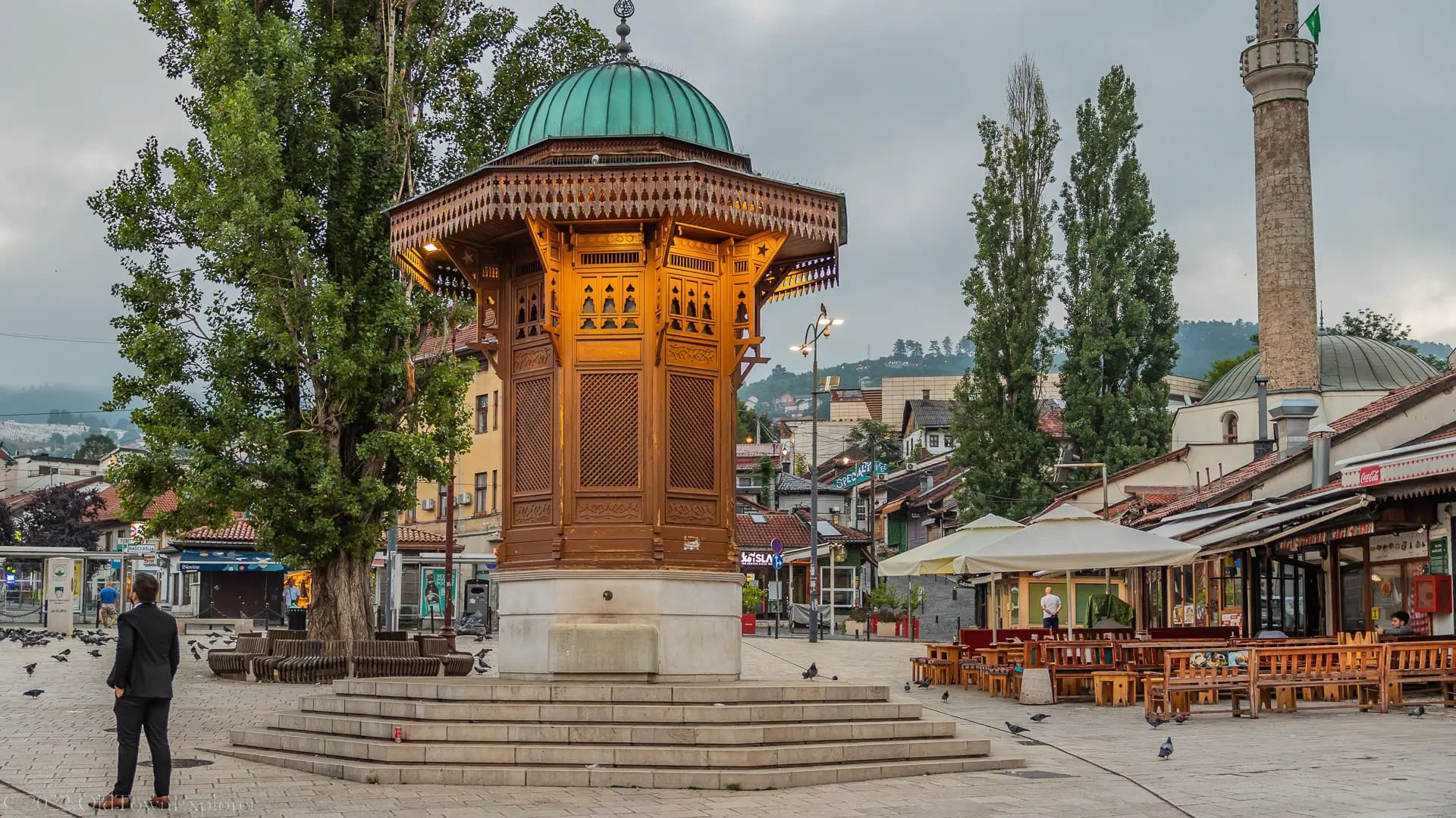The Sebilj Fountain, an iconic symbol of Baščaršija, the historic district of Sarajevo, stands as a testament to the city’s rich cultural heritage and centuries-old traditions. This ornate wooden fountain, characterized by its intricate design and distinctive Ottoman architecture, holds a special place in the hearts of Sarajevans and visitors alike, serving as a beloved meeting point and gathering spot in the heart of the Bosnian capital.
The Sebilj Fountain is located at the center of Baščaršija, Sarajevo’s bustling main square, where it stands as a focal point amidst the lively streets and colorful markets. Its name, “Sebilj,” is derived from the Arabic word “sabil,” meaning “public fountain,” reflecting its original purpose as a source of clean drinking water for the people of Sarajevo.
Constructed in the 18th century during the Ottoman period, the Sebilj Fountain is a fine example of Ottoman architecture and craftsmanship. Its wooden structure features a hexagonal base supported by slender columns, topped by a pyramidal roof adorned with ornate carvings and arabesque motifs. The fountain is crowned by a small dome, beneath which a series of spigots dispense fresh water into the basin below.
Legend has it that the Sebilj Fountain was built by Mehmed Pasha Kukavica, the governor of Bosnia, as a gesture of goodwill towards the people of Sarajevo. According to tradition, anyone who drinks from the fountain or makes a wish while passing by will be granted good luck and prosperity.
Over the years, the Sebilj Fountain has become much more than a mere source of water; it has evolved into a symbol of Sarajevo’s spirit and resilience. Despite enduring wars, conflicts, and periods of upheaval, the fountain has stood as a silent witness to the city’s history, serving as a gathering place for generations of Sarajevans and visitors from around the world.
Today, the Sebilj Fountain remains a beloved landmark and popular tourist attraction in Sarajevo, drawing crowds of visitors who come to admire its beauty, take photographs, and experience the vibrant atmosphere of Baščaršija. The square surrounding the fountain is often bustling with activity, as locals and tourists mingle, shop in the nearby markets, and enjoy the street performers and musicians who frequent the area.
In addition to its cultural significance, the Sebilj Fountain plays a practical role in modern-day Sarajevo, providing a source of clean drinking water for residents and visitors alike. Its presence serves as a reminder of the city’s Ottoman past and its enduring legacy, connecting the past with the present and bridging the gap between tradition and modernity.
In conclusion, the Sebilj Fountain stands as a symbol of Sarajevo’s rich history, cultural diversity, and indomitable spirit. As one of the most recognizable landmarks in the city, it continues to captivate the imagination of all who encounter it, serving as a timeless symbol of hope, unity, and resilience in the heart of the Bosnian capital.



